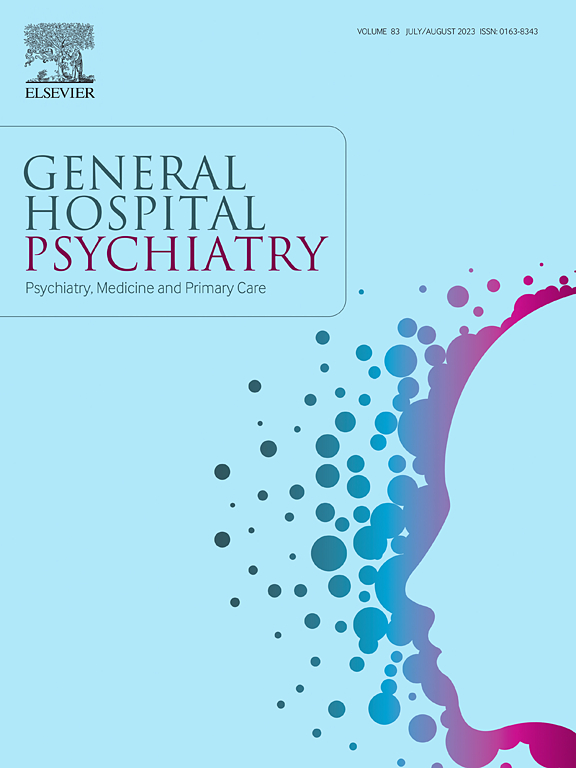Effectiveness and safety of repetitive transcranial magnetic stimulation for generalized anxiety disorder: A meta-analysis and trial sequential analysis of randomized controlled trials
IF 3.7
2区 医学
Q1 PSYCHIATRY
引用次数: 0
Abstract
Background
Generalized anxiety disorder (GAD) is a chronic disorder characterized by uncontrollable, excessive, widespread anxiety lasting for over six months. Repetitive transcranial magnetic stimulation (rTMS) has been used in treating anxiety disorders, but previous studies have yielded contradictory results. We performed a meta-analysis and trial sequential analysis to investigate the effectiveness and safety of rTMS for GAD and explore the optimal treatment protocol of rTMS for GAD.
Methods
Eight databases were systematically searched to identify randomized controlled trials (RCTs) of rTMS for GAD. The primary outcome was the Hamilton Anxiety Scale. Secondary outcomes included a self-rating anxiety scale, clinical global impression-severity of illness, and incidence of adverse events. Data synthesis was conducted using Review Manager (version 5.4) and Stata software (version 12.0).
Results
A total of 29 eligible trials were included. The rTMS combined with medication was more effective than the medication alone in alleviating symptoms of patients with GAD (mean difference [MD] = −3.38, 95 % confidence interval [CI]: from −4.47 to −2.28). Compared with sham-rTMS combined with medication, rTMS combined with medication exhibited a significant effect in improving symptoms of GAD (MD = −2.80, 95 % CI: from −3.71 to −1.89). No serious adverse events were reported between rTMS treatment and medication therapy.
Conclusion
The rTMS could be an effective and safe treatment for patients with GAD. However, these findings should be interpreted with caution due to high heterogeneity and limited number of RCTs.
重复经颅磁刺激治疗广泛性焦虑障碍的有效性和安全性:随机对照试验的荟萃分析和试验序贯分析
广泛性焦虑障碍(GAD)是一种慢性疾病,其特征是持续6个月以上的无法控制的、过度的、广泛的焦虑。重复经颅磁刺激(rTMS)已被用于治疗焦虑症,但以往的研究结果相互矛盾。我们通过荟萃分析和试验序贯分析来探讨rTMS治疗GAD的有效性和安全性,并探索rTMS治疗GAD的最佳方案。方法系统检索8个数据库,确定rTMS治疗广泛性焦虑症的随机对照试验(rct)。主要结果是汉密尔顿焦虑量表。次要结果包括自评焦虑量表、临床总体印象-疾病严重程度和不良事件发生率。使用Review Manager (version 5.4)和Stata软件(version 12.0)进行数据综合。结果共纳入29项符合条件的试验。rTMS联合用药在缓解GAD患者症状方面比单独用药更有效(平均差[MD] =−3.38,95%可信区间[CI]:从−4.47到−2.28)。与假rTMS联合用药相比,rTMS联合用药在改善GAD症状方面表现出显著效果(MD = - 2.80, 95% CI:从- 3.71到- 1.89)。rTMS治疗与药物治疗之间无严重不良事件报告。结论rTMS是一种安全有效的治疗广泛性焦虑症的方法。然而,由于高异质性和有限数量的随机对照试验,这些发现应谨慎解释。
本文章由计算机程序翻译,如有差异,请以英文原文为准。
求助全文
约1分钟内获得全文
求助全文
来源期刊

General hospital psychiatry
医学-精神病学
CiteScore
9.60
自引率
2.90%
发文量
125
审稿时长
20 days
期刊介绍:
General Hospital Psychiatry explores the many linkages among psychiatry, medicine, and primary care. In emphasizing a biopsychosocial approach to illness and health, the journal provides a forum for professionals with clinical, academic, and research interests in psychiatry''s role in the mainstream of medicine.
 求助内容:
求助内容: 应助结果提醒方式:
应助结果提醒方式:


